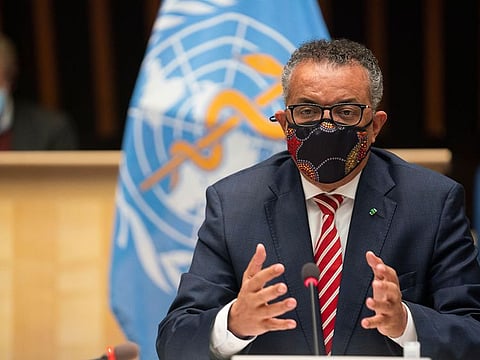COVID-19: Global cases top 35.3 million: Johns Hopkins
One in 10 in world may have had the coronavirus already, says World Health Organisation

Washington: The overall number of global coronavirus cases has topped 35.3 million, while the deaths have increased to more than 1,042,600, according to the Johns Hopkins University. As of Tuesday, the total number of cases stood at 35,396,981 and the fatalities rose to 1,042,679, the University's Center for Systems Science and Engineering (CSSE) revealed in its latest update.
The US is the worst-hit country with the world's highest number of cases and deaths at 7,455,184 and 210,155, respectively, according to the CSSE. India comes in second place in terms of cases at 6,623,815, while the country's death toll soared to 102,685.
The other top 15 countries with the maximum amount of cases are Brazil (4,915,289), Russia (1,219,796), Colombia (862,158), Peru (828,169), Spain (813,412), Argentina (809,728), Mexico (789,780), South Africa (682,215), France (664,289), the UK (518,222), Iran (475,674), Chile (471,746), Iraq (382,949), Bangladesh (370,132), and Saudi Arabia (336,766), the CSSE figures showed. Brazil currently accounts for the second highest number of fatalities at 146,352.
The countries with a death toll above 10,000 are Mexico (81,877), the UK (42,459), Italy (36,002), Peru (32,742), France (32,317), Spain (32,225), Iran (27,192), Colombia (26,844), Argentina (21,468), Russia (21,375), South Africa (17,016), Chile (13,037), Ecuador (11,681), Indonesia (11,253) and Belgium (10,064).
'Vast majority still at risk’
In a special meeting, the leaders of the World Health Organization (WHO) said that one in 10 people around the world may have contracted COVID-19. A top official said the estimate meant "the vast majority of the world remains at risk", the BBC reported.
Just over 35 million people have been confirmed as being infected with coronavirus - the WHO's estimate puts the true figure at closer to 800 million. Experts have long said the real number of cases would exceed those confirmed.
The WHO is meeting at its headquarters in Geneva, Switzerland, to discuss the global response to the pandemic.
Ten months on, the crisis shows no sign of ending. Several countries are seeing second waves after easing restrictions and in some cases numbers are even higher.
The estimate that 10 per cent of the world's population has contracted the virus came from Mike Ryan, the executive director of the WHO's Health Emergencies Programme.
"This varies depending on country, it varies from urban to rural, it varies between different groups," he said.
"But what it does mean is that the vast majority of the world remains at risk. We know the pandemic will continue to evolve but we also know we have the tools that work to suppress transmission and save lives right now and they are at our disposal."
Calling for solidarity and firm leadership from countries, WHO Director General Tedros Adhanom Ghebreyesus said there had been marked differences in the number of cases around the world.
"Although all countries have been affected by this virus, we must remember that this is an uneven pandemic. Ten countries account for 70 per cent of all reported cases and deaths and just three countries account for half," he said.
More than one million people have died from the virus, according to a tally from Johns Hopkins University. After the US, India and Brazil have seen the most infections.
Sign up for the Daily Briefing
Get the latest news and updates straight to your inbox









